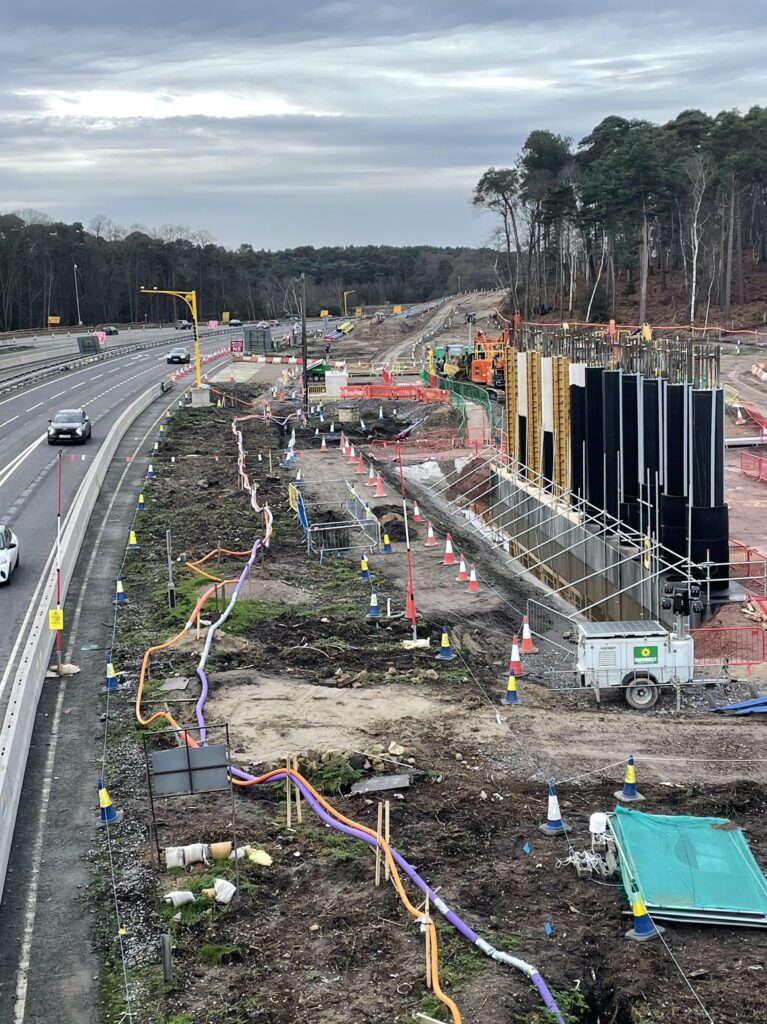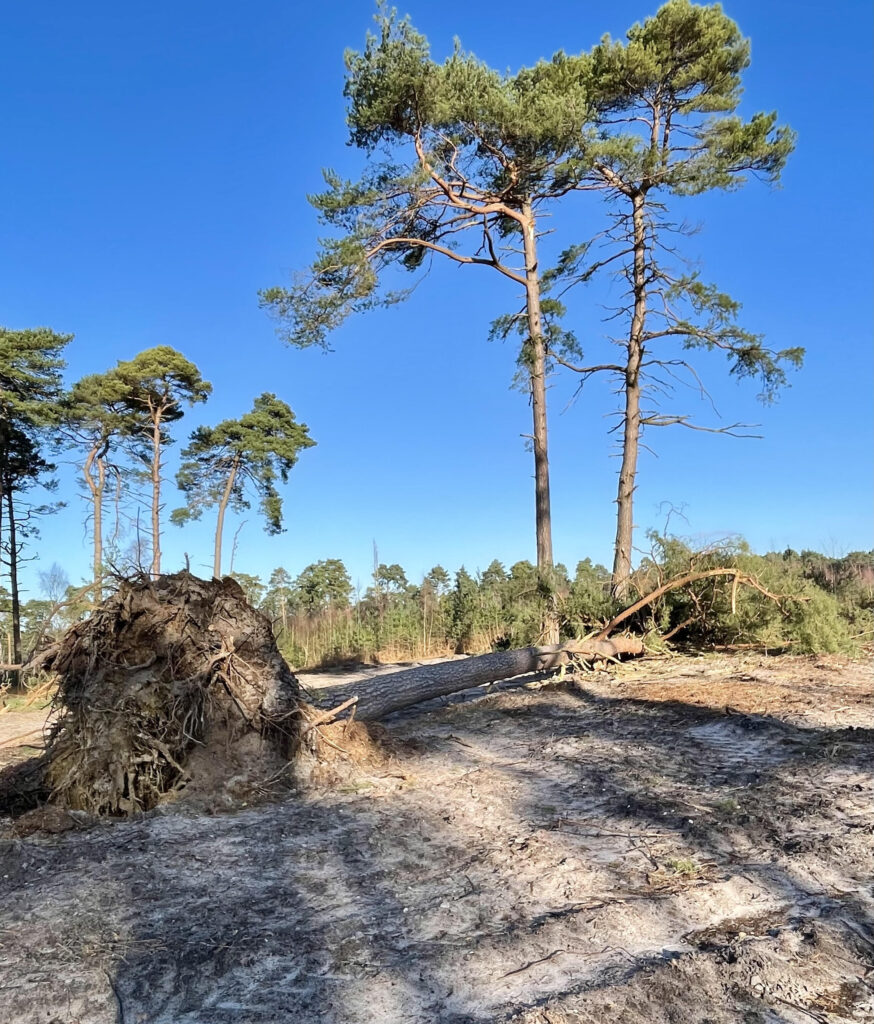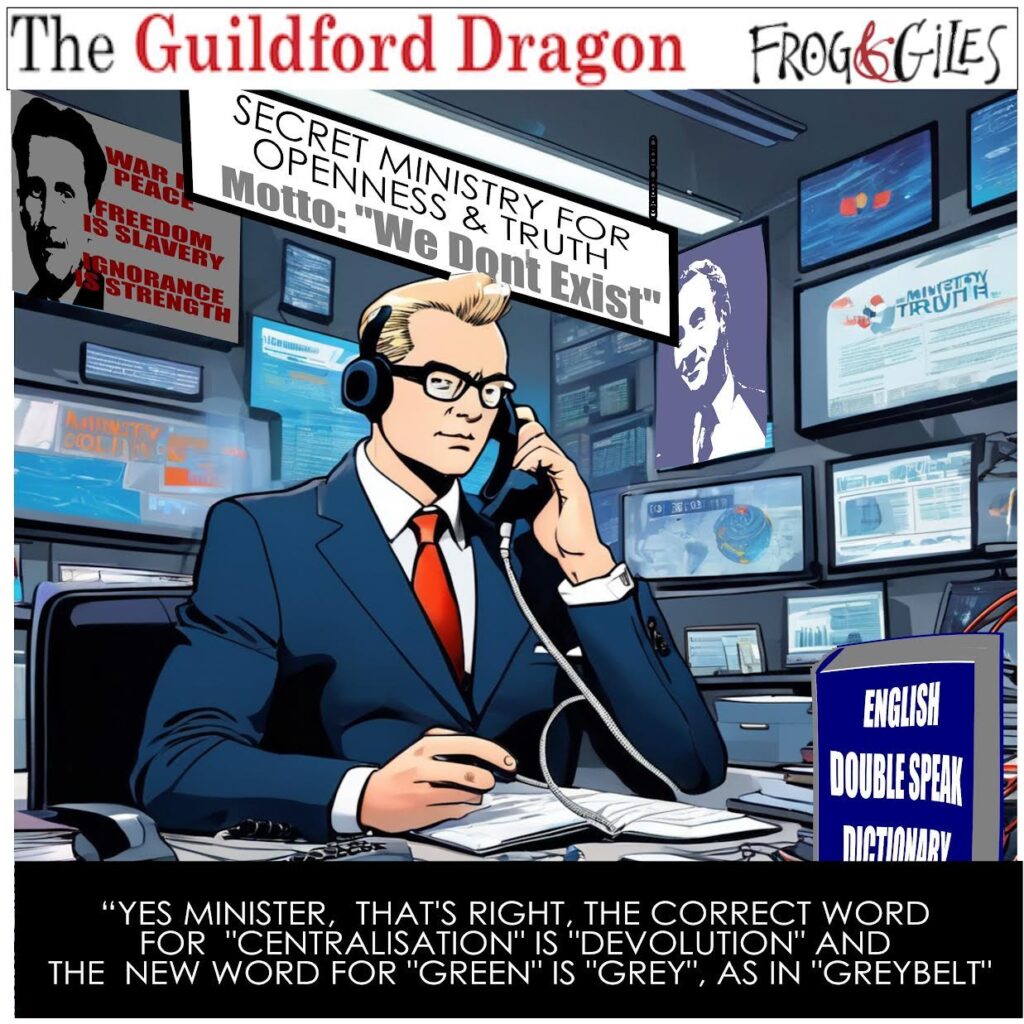 Abraham Lincoln
If given the truth, the people can be depended upon to meet any national crisis...
Abraham Lincoln
If given the truth, the people can be depended upon to meet any national crisis...
 Guildford news...
for Guildford people, brought to you by Guildford reporters - Guildford's own news service
Guildford news...
for Guildford people, brought to you by Guildford reporters - Guildford's own news service
Opinion: The Pros and Cons of the Re-designed Junction 10
Published on: 16 Jan, 2024
Updated on: 19 Jan, 2024
By Chris Dick
Will history judge Junction 10 M25 a success?
Work on the new £350 million M25 junction is due for completion by Summer 2025. But will the benefits to road users, local residents and businesses outweigh the detractors’ concerns?
As important, what will those living and working nearby have gained?
Ockham Common has been cleared of hundreds, if not thousands of pine and silver birch trees. Flora, and surface soil has been stripped back destroying the habitat of local fauna.
The topsoil was cleared down a few inches to prevent seeds already on the ground from choking the new heather which should take over.
 This process was successful when a smaller-scale tree-felling program took place a few years ago. But the magnitude of this current scheme looks like the aftermath of a 1st World War battlefield.
This process was successful when a smaller-scale tree-felling program took place a few years ago. But the magnitude of this current scheme looks like the aftermath of a 1st World War battlefield.
Whilst the more common eastern white pines have been felled in high numbers, the native scots pines and small areas of earth immediately surrounding those fortunate trees have been saved.
However, their future is not assured as high winds and lightning strikes will inevitably take their toll. Lacking branches at the lower levels these top heavy trees do not always survive without the protection of the now-decimated common pines.
It all looks grim.
Sadly, the future of the Ockham Bites cafe is also in the balance.
Effectively the cafe and its car park is now an unsightly island, bordered by a slip road from the M25 heading south onto the A3, some highway works access and metal fencing. Access is unclear and unwelcoming. The cafe has understandably lost many of its customers, dog walkers, ramblers and passing trade.
On the plus side, residents of Elm Corner no longer have to use the old airfield exit onto the A3 southbound as there is now a new access road for them onto Old Lane.
And the new natural bridge over the A3 giving access to Wisley Common on the north side of the A3 will also be an asset.

National Highways view of the, yet to be completed, natural Cockcrow green bridge which will be the first “heathland” green bridge
The bridge will be the UK’s first heathland green bridge and will re-connect the Ockham Common and Wisley Common that have long been severed by the A3. This access will virtually double the public’s access to common land and will be a an amazing amenity that can be enjoyed by all for generations to come. Indeed, the facilities around Ockham Bites cafe – if it survives – will make access to the commons from both sides of the A3.
As Jonathan Wade, National Highways Senior Project Manager for the M25 J10 upgrade has said: “We’re keen to make sure that our scheme benefits the local community as well as motorists and this new footbridge will make crossing the M25 much safer and easier for pedestrians, cyclists, and horse riders.”
The disappointment is that National Highways did not go far enough with these alterations. The Ripley roundabout would have benefited from access onto the A3 to and from the south. But with the costs of the present works likely to set a record high, set against the state of the country’s economy, perhaps this improvement can wait.
Responses to Opinion: The Pros and Cons of the Re-designed Junction 10
Leave a Comment Cancel reply
Please see our comments policy. All comments are moderated and may take time to appear. Full names, or at least initial and surname, must be given.Recent Articles
- Highways Bulletin: Roadside Rangers Making a Visible Difference Across Surrey
- Letter: The Enduring Role of Parish and Town Councils
- Mr Carpenter’s Byfleet Seedling and Other Varieties of Apples
- Guildford MP Visits Local Satellite Firm During 40th Anniversary Year
- Letter: Only a Town Council Will Give Us to the Option to Choose on Some Local Services
- Comment: Parish Councils – Who Cares?
- Update: North Street Re-opened
- Letter: Parish and Town Councils Will Become More Essential Than Ever
- Plans for Several Railway Repair Projects Over August Bank Holiday
- Letter: We Should Thank Parish Councillors



Recent Comments
- Jim Allen on Letter: The Enduring Role of Parish and Town Councils
- Olly Azad on Comment: Parish Councils – Who Cares?
- Jan Messinger on Letter: The Enduring Role of Parish and Town Councils
- George Potter on Letter: Only a Town Council Will Give Us to the Option to Choose on Some Local Services
- Fiona Yeomans on Dragon Review: A Comedy of Errors and A Company of Rascals – Yvonne Arnaud Theatre
- D Kaur on ‘We Need To Get This Right,’ Says Coroner at Sara Sharif Pre-inquest Review
Search in Site
Media Gallery
Dragon Interview: Local Artist Leaves Her Mark At One of England’s Most Historic Buildings
January 21, 2023 / No Comment / Read MoreDragon Interview: Lib Dem Planning Chair: ‘Current Policy Doesn’t Work for Local People’
January 19, 2023 / No Comment / Read MoreA3 Tunnel in Guildford ‘Necessary’ for New Homes, Says Guildford’s MP
January 10, 2023 / No Comment / Read More‘Madness’ for London Road Scheme to Go Ahead Against ‘Huge Opposition’, Says SCC Leader
January 6, 2023 / No Comment / Read MoreCouncillor’s Son Starts Campaign for More Consultation on North Street Plan
December 30, 2022 / No Comment / Read MoreCounty Council Climbs Down Over London Road Works – Further ‘Engagement’ Period Announced
December 14, 2022 / No Comment / Read MoreDragon Interview: GBC Reaction to the Government’s Expected Decision to Relax Housing Targets
December 7, 2022 / No Comment / Read MoreHow Can Our Town Centre Businesses Recover? Watch the Shop Front Debate
May 18, 2020 / No Comment / Read More
















Jim Allen
January 16, 2024 at 7:33 pm
There were better options, but the highways England decided the consultation was yet another informative!
Trees could have been saved, traffic flows reduced, even the head of Surrey Highway’s comments were ignored!
The route to RHS Wisley is irrational and over engineered. But what would any member of the public, familiar with he area, know? Not one of the comments on the consultation were acknowledged by amendments. Just like GBC and SCC “consultations”.
2025 will be the the year traffic problems in Burpham increase.
Tom Mackenzie
January 20, 2024 at 11:20 pm
It’s common for protestors and others to feel that their views have been ignored. However, in many cases the reality is that the promoter heard that view, weighed it up taking expert opinion into account, and concluded that their own proposals remained sound and didn’t need to be amended. In such cases claiming to have been ignored is a misrepresentation.
Bibhas Neogi
January 18, 2024 at 12:29 am
I have given my views on the design chosen by Highways England, now National Highways. 21 Options were explored but not the one with free-flow of the traffic leaving the M25 and joining the A3 using two very short tunnels under the A3 and two M25 underpasses. A similar option using high-level viaducts was rejected because of high costs and large-scale environmental damage that would have been caused.
My comments in https://guildford-dragon.com/project-team-disappointed-with-sos-decision-to-slash-m25-j10-environmental-mitigation/ described the above-mentioned idea.
Maybe the National Audit Office should examine the appropriateness of the decision made on the adoption of the design being constructed now, for value for money and whether the extent of environmental devastation was necessary.
Will the elongation of the junction from circular to oblong shape improve traffic flow? Maybe for the traffic leaving the M25 to join the A3 but I doubt if there would be any improvement to the A3 traffic trying to join the M25. This traffic, during the peak periods, will simply queue on the slip roads.
Robin Cregeen
January 18, 2024 at 5:22 pm
One has to question whether National Highways pushed for this work to keep themselves in business.
I believe it is highly debatable that the benefits outweighed to costs. And not just financial costs; the social and lost employment time aspects need to be calculated too.
There should be an ongoing assessment whether approval of this work was truly justified.
Tom Mackenzie
January 20, 2024 at 11:51 pm
I’d recommend that Robin and other readers take a look at National Highways’ Delivery Plan online. It shows that major enhancements in the current Road Investment Period make up just over half of the organisation’s budget. The remainder being consumed by maintenance and renewals of the Strategic Road Network. From 2025 the proportions will alter, with the proportion spent on enhancements such as the M25 J10 Improvements declining.
National Highways need no justification to remain ‘in business’. Or perhaps Robin envisages rolling back the clock several decades to transfer its functions back to the Department for Transport and County Councils?
Finally, the questions posed re cost benefit analysis etc. can all be answered by looking at publically available material online, e.g on the Planning Inspectorate’s website.